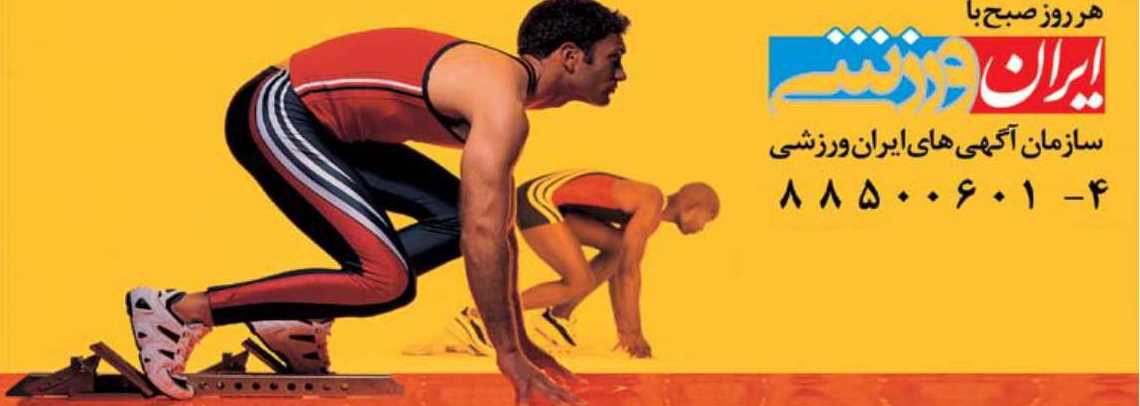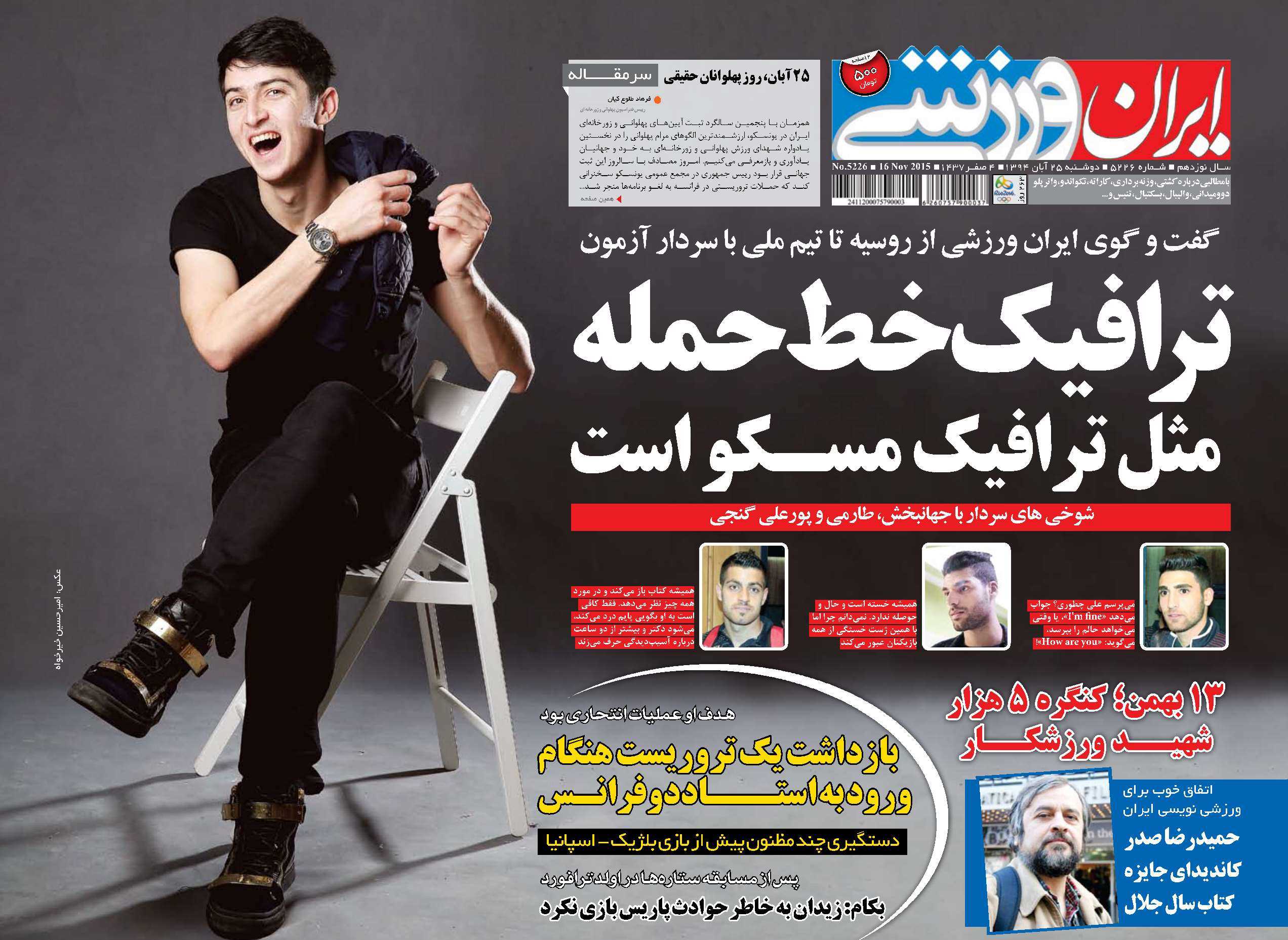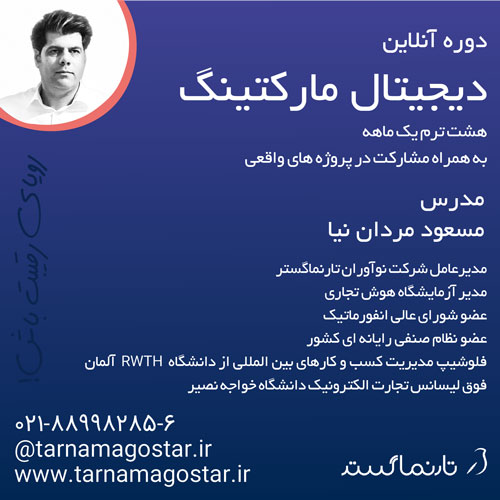عناوین این صفحه
جستجو بر اساس تاریخ
نظرسنجی
شماره : 6930 /
۱۴۰۰ سه شنبه ۳۰ آذر
|
|
پروژه پرهزینه استقلال: دوبارهسازی در زمستان
سرمقاله
فرشاد کاسنژاد @Farshadcasnejad
استقلال پیش از دوره مدیریت جدید، مهمترین اختلافات بین دو مدیرعامل پیشین - احمد سعادتمند و احمد مددی- با فرهاد مجیدی را درباره موضوع نقل و انتقالات بازیکنان تجربه کرده بود، آنچنان که مجیدی در اوج اختلافاتش با سعادتمند گفته بود: «اگر استقلالی واقعی هستید، دفعه بعد لااقل حامی این دروغگوها نباشید. حمایت نادرست باعث شد که استقلال برای دومین سال متوالی توسط دلالها بسته شود و نه سرمربی.» و با احمد مددی نیز در نقل و انتقالات بازیکنان و حتی قرارداد دستیار ایتالیایی -گابریله پین- دچار بزرگترین اختلافنظرها شد.
در فصل جدید اما فرهاد مجیدی اختیار و فرصت داشت تا بدون دغدغهها و سنگاندازیهای گذشته، تیم جدیدش را بسازد. این موقعیت تازه هم فرصتی برای آزمون ایدههایش بود و هم مسئولیت فرهاد مجیدی را بیشتر میکرد.
سلیقه مربیان در تیم ساختن یکی از مهمترین بخشهای کاراکتر مربیگری آنهاست. همانچه سرنوشت آنها در یک فصل و تکلیف آنها را در بازار مربیگری تعیین میکند. مربیان البته طی سالها و با تجربه کردن انتخابهای خود به درک بهتری در انتخاب بازیکن میرسند و آنچه بلدند در بازی اجرا کنند با خریدهای خود هماهنگ میکنند. این ویژگی با هوش و تجربه به دست میآید.
فرهاد مجیدی با انتخابهایش در استقلال نشان داده است که برای انجام موفقیتآمیز پروژه انتخاب، به شناخت و تجربه بیشتر نیاز دارد. شاید او در انتخابهای بعدیاش مربی خوشسلیقهتری باشد یا دستکم ابزارهای اصلی برای اجرا را فراموش نکند.
وقتی آرش رضاوند در فصل نقل و انتقالات اولین بازیکنی بود که قراردادش را به میل فرهاد مجیدی تمدید کرد، آن تصمیم را نشانهای میدانستیم برای اینکه بدانیم استقلال جدید با چه کیفیت و سلیقهای شکل میگیرد. رضاوند میتوانست آخرین بازیکنی باشد که برای بازی در خط میانی استقلال قراردادش را تمدید میکند و شاید استقلال با خریدهای بهتر، حتی میتوانست از تمدید قرارداد با بازیکنانی مثل آرش رضاوند صرفنظر کند.
استقلال در فصل جاری تا روزی که وریا غفوری را در ترکیب داشت، بهترین بازیکنش وریا غفوری بود. وریا اما پیش از آغاز فصل تمامشده تصور شده بود و این موضوع القا شده بود که باید جانشین وریا را انتخاب کرد. کوین یامگا با همین پیشفرض به استقلال آمد اما وریا در پست خودش باکیفیتتر از یامگا بود و بازیکن خارجی استقلال به خط حمله منتقل شد.
استقلال تا روزی که وریا را در ترکیب داشت، فقط یک بازیکن برای جناح راست را در اختیار نداشت، بلکه وریا از پست خودش مثل یک پلیمیکر برای استقلال بازی میساخت، کاری سخت که وریا از پس آن برآمده بود.
استقلال اما هرگز نتوانست این بازی ساختن را در مرکز زمین اجرا کند. هافبکهای استقلال در قوارهای نیستند که ساخت بازی را در مرکز زمین با کیفیتی که در استقلال توقع میرود، انجام دهند. در استقلال هافبکهای دفاعی هم هر کدام میخواهند چنین مسئولیتی را بر عهده بگیرند و در ساخت بازی اگرچه همگی یک گام جلوتر از آرش رضاوند هستند اما گره استقلال را باز نمیکنند.
فرهاد مجیدی باید در نقل و انتقالات زمستانی برای دوبارهسازی تیمش خرید کند. او بازیکنان پرشماری را در تیمش دارد که حالا شاید بداند جدایی آنها به استقلال کمک میکند اما این تصمیم در نقل و انتقالات زمستانی پردردسر و پرهزینه است.
مصوبات مهم در کنگره جهانی وزنهبرداری
مشخص شدن تاریخ انتخابات IWF، تعیین اوزان المپیکی و تشدید قوانین دوپینگ
کنگره فدراسیون جهانی وزنهبرداری در تاشکند برگزار شد و مصوبات مهمی داشت. ۶۹ کشور به صورت حضوری و ۳۲ کشور در این کنگره آنلاین شرکت کردند.
بنابر تصمیم و تصویب هیأت رئیسه فدراسیون بینالمللی وزنهبرداری (IWF) در کنگره، هر کشوری که در 18 ماه منتهی به المپیک 2024 پاریس بیش از 3 مورد تست مثبت دوپینگ داشته باشد، به طور کامل از حضور در رقابتهای وزنهبرداری این بازیها محروم خواهد شد. این قانون در مرحله کسب سهمیه برای بازیهای المپیک 2020 توکیو متفاوت بوده و کشورهای عضو در صورت دارا بودن بیش از 3 مورد مثبت دوپینگ، سهمیه کمتری برای حضور در المپیک دریافت میکردند در حالیکه طبق مصوبه جدید، 3 مورد دوپینگ برای هر کشوری برابر با حذف کامل از بازیهای المپیک پاریس خواهد بود.
یکی دیگر از مصوبات هیأت رئیسه و کنگره IWF تعیین 5 وزن المپیکی برای زنان و مردان است که جهت تأیید به کمیته بینالمللی المپیک IOC ارائه خواهد شد و سپس در رقابتهای بینالمللی جهت کسب سهمیه حضور در بازیهای المپیک اعمال خواهد شد.
این اوزان در بخش مردان 61، 73، 89، 102 و 102+ و در بخش زنان 49، 59، 71، 81 و 81+ خواهد بود.
در کنگره عمومی فدراسیون جهانی وزنهبرداری برای تعیین زمان برگزاری انتخابات این فدراسیون تصمیمگیری و در نهایت تاریخ نهایی انتخابات اعلام شد.
طبق اعلام فدراسیون جهانی وزنهبرداری، انتخابات در تاریخ ۲۴ و ۲۵ ژوئن ۲۰۲۲ (۴ و ۵ تیر ۱۴۰۱) برگزار میشود.
کنگره فوقالعاده فدراسیون جهانی نیز ۳۰ ژانویه (۱۰ بهمن) برگزار خواهد شد. دستور کار کنگره فوقالعاده، اصلاحاتی در اساسنامه فدراسیون جهانی با هدف تسریع روند انتخابات خواهد بود. هیچ پیشنهادی هم برای تضعیف معیارهای تأیید صلاحیت کاندیداها پذیرفته نمیشود.
فراخوان برای نامزدی کاندیداها نیز ۲ مارس (۱۱ اسفند) است و آخرین مهلت برای بررسی صلاحیت کاندیداها نیز ۳۰ آوریل (۱۰ اردیبهشت) است.
مایکل ایرانی سرپرست فدراسیون جهانی گفت: ما اصلاحات و تغییر فرهنگ را از ابتدای سال ۲۰۲۱ شروع کردهایم و قطعاً معیارهای کمیته بینالمللی المپیک را انجام میدهیم.
فدراسیون جهانی وزنهبرداری اشتباه در پخش سرود ملی ایران را پذیرفت
عذرخواهی رسمی IWF از ایران
در پی بروز اشتباه فاحش کمیته برگزاری مسابقات جهانی ازبکستان در پخش سرود ملی ایران هنگام اهدای مدال به قهرمانان دسته 102 کیلوگرم مردان، فدراسیون جهانی وزنهبرداری طی نامهای ضمن قبول این اشتباه، رسماً عذرخواهی کرد.
مایکل ایرانی سرپرست فدراسیون جهانی و محمد جلود دبیرکل این فدراسیون در متن نامه اعلام کردند: «ما حساسیت این موضوع را درک میکنیم و به دلیل این اشتباه بزرگ که انجام شد، بسیار شرمنده هستیم. لطفاً عمیقترین و صمیمانهترین عذرخواهی ما را بپذیرید. مطمئن باشید که IWF در آینده توجه ویژهای خواهد داشت که چنین اشتباهی دیگر تکرار نشود. یک بار دیگر عذرخواهی ما را از صمیم قلب بپذیرید.»
فائز یک گلر پنالتیگیر است
ربیعی: بدون 6 بازیکن، از تراکتور بهتر بودیم
محمد ربیعی سرمربی تیم فوتبال مس رفسنجان پس از برتری مقابل تراکتور در جام حذفی اظهار داشت: در کمتر از دو هفته این دو تیم دو بازی خیلی خوب و با کیفیت و بدون حاشیه انجام دادند. بچههای ما امروز تلاش زیاد و درستی داشتند. در نیمه اول تراکتور بهتر از ما بود اما در نیمه دوم و حتی وقتهای اضافه ما بهتر بودیم و موقعیت داشتیم. امروز چند بازیکن خود را به دلایل مختلف نداشتیم و نسبت به بازی قبلی با تراکتور 6 تغییر داشتیم. وی ادامه داد: خوشحالم به بچههایی از ابتدا بازی دادیم که 5 نفر آنها سهمیه زیر 21 سال بودند و خیلی خوب کار کردند و این میتواند نوید روزهای خوب را بدهد. در درون دروازه نوشی صوفیانی 120 دقیقه خوب کار کرد و فائز هم در ضربات پنالتی عالی عمل کرد. سرمربی مس در مورد تراکتور گفت: روند پیشرفت آنها نسبت به دو هفته قبل بهتر شده و برای این تیم احترام زیادی قائل هستم. ربیعی در مورد تغییر گلر گفت: فائز دروازهبان پنالتیگیری بوده و در جام عرب هم دو پنالتی خوب گرفت و تشخیص فنی بود که او برای پنالتیها وارد میدان شود. سرمربی مس رفسنجان با اشاره به کمبود زمان بین بازیها عنوان کرد: 4 روز قبل یک بازی در شیراز انجام دادیم و امروز به تبریز آمدیم و 3 روز دیگر باید در زمین خودمان بازی کنیم اما رقیب آینده ما یک روز بیشتر استراحت کرده. بهتر بود همه بازیها در یک زمان خاص باشد و عدالت رعایت شود. ما باید به رفسنجان باز گردیم و 3 روز دیگر بازی کنیم. در مجموع این پیروزی را به کارگران مس رفسنجان تقدیم میکنم. وی در مورد داوری و اینکه در دقیقه 88 توپ به دست بازیکن مس خورد، گفت: من آن صحنه را ندیدم، چون دور بودم اما عرب براقی داور خوبی است، ما یکی دو گلایه داریم. در صحنه مشابه به بازیکن ما کارت داد و به آنها نه.
نتایج سینوسی؟ این سؤال را چند بار پرسیدهاید
سولدو: نمیتوانم از بازیکنان ایرادی بگیرم، بدشانس بودیم
زونیمیر سولدو سرمربی تیم فوتبال تراکتور پس از شکست تراکتور مقابل مس رفسنجان در جام حذفی اظهار داشت: بازی خیلی خوب بود و در 120 دقیقه تیم حریف را خوب کنترل کردیم و موقعیت آنچنانی ندادیم. ما یک موقعیت خوب در نیمه اول داشتیم که به تیر خورد و در ادامه هم خوب بودیم. در مجموع بازی که به پنالتی کشیده میشود، شانس پیروزی برابر است و این بار به سود مس شد.
وی در مورد نتایج سینوسی تراکتور عنوان کرد: چندین بار است که این سؤال پرسیده میشود. تیم ما به خوبی آمادهسازی نداشته و فصل را خوب شروع نکرده است. 7، 8 بازیکن خوب فصل قبل هم جدا شدند و جایگزین خوب هم جذب نشد. فشردگی مسابقات هم اذیت میکند و زمانی نداریم که به اندازه کافی کار کنیم. 4 روز دیگر باید مسابقه بدهیم و فصل سختی را پیش رو داریم. جوانانی که هستند، خوب کار میکنند و کیفیت آنها همین است.
سرمربی تراکتور در مورد داوری گفت: توپ به دست بازیکن حریف خورد و داور یک پنالتی 100 درصد ما را نگرفت اما نمیخواهم در مورد آن بیشتر توضیح بدهم.
سولدو در مورد عملکرد بازیکنانش اظهار داشت: بچههای ما در وسط زمین چیزی که میخواستیم را انجام دادند و نمیتوانم ایرادی بگیرم. باز هم میگویم پنالتی شانسی است و هر تیمی بهتر بزند و شانس داشته باشد، برنده میشود. آمادگی روحی و روانی هم البته مهم است.
جلسه اضطراری مدیران فوتبال انگلیس برای لیورپول و چلسی نتیجهای نداشت
لیگ برتر به تعویق نیفتاد
رسول مجیدی @Rasoulmajidi
جلسه اضطراری مدیران لیگ برتر برای تصمیمگیری درباره بازیهای لیگ در تعطیلات پایان سال به نفع لیورپول و باشگاههای همراهش پیش نرفت. دیروز نمایندگان 20 تیم لیگ برتری جلسهای با سران لیگ برتر ترتیب دادند تا با توجه به، به تعویق افتادن 6 بازی از جمع 10 بازی هفته گذشته برای بازیهای هفته بعد تصمیم بگیرند. هفته بعد و در فاصله کریسمس تا شب سال نو قرار است طی 48 ساعت تیمهای لیگ برتری همچون همیشه 2 بار به میدان بروند و حالا بیم این میرود که با گسترش سویه جدید ویروس کرونا در انگلیس، دوباره شاهد لغو چند بازی باشیم.
لیورپول و چند تیم دیگر از جمله تیمهایی بودند که طرفدار برگزار نشدن بازیهای هفته بعد بودند اما در نهایت 14 باشگاه لیگ برتری رأی به ادامه لیگ با شرایط فعلی دادند. مقامات لیگ برتر البته تصمیم گرفتهاند تیمها حتی در صورت اینکه بازیکنان زیر 21 سالشان هم در دسترس باشند و شرایط بازی داشته باشند، بازی تیمها را برگزار کنند تا از به تعویق افتادن بیشتر بازیها جلوگیری شود. همچنین قرار شد رقابتهای مرسوم در لیگ برتر همچون دیدار تیمهای ذخیره و زیر 23 سال باشگاهها با یکدیگر فعلاً برگزار نشود تا تیمها امکان استفاده از بازیکنان این تیمها را داشته باشند.
اتحادیه فوتبال انگلیس هم قبول کرده تا در صورت مساوی شدن بازیهای جام حذفی در مرحله سوم و چهارم از تکرار مجدد آنها جلوگیری کند و با ضربات پنالتی تکلیف تیم برنده را مشخص کنند.
بر اساس آمار در لیگ برتر تنها 68 درصد بازیکنان هر دو دوز واکسن خود را زدهاند و این پایینترین آمار در بین 5 لیگ معتبر فوتبال اروپاست. آن هم در حالی که گفته میشود برای مقابله با سویه اومیکرون ویروس کرونا نیاز به تزریق دوز سوم هم هست.
چلسی و سرمربی آلمانیاش هم یکی از تیمهایی است که مثل لیورپول به شرایط معترض است. بخصوص بعد از تساوی این هفته با ولور همپتون. آنها در ورزشگاه مولینیو تنها 4 بازیکن بزرگسال روی نیمکت داشتند اما به هرحال تیمی کامل را در زمین میدیدند. با این همه توخل به شرایط معترض بود و اعتقاد داشت لیگ برتر باید با درخواست باشگاه چلسی مبنی بر به تعویق انداختن بازی با ولوز موافقت میکرده است.
بر طبق قوانین لیگ برتر هر باشگاهی که 14 بازیکن در دسترس داشته باشد باید در زمین حاضر شود و بازیهایش به تعویق نمیافتد. باشگاهها موظف شدند بازیکنان تیم زیر 21 سال را هم علاوه بر تیم زیر 23 سال در نظر بگیرند. به این شرط که این بازیکن تجربه بازی در لیگ برتر یا لیگهای پایینتر را داشته باشد.
وقت اهدای عروسکهای بازنشسته!
سوژه روز
احسان محمدی
«کاش مسئولین ما هم بلد بودن مثل خارجیا از این کارا بکنن!» این جملهای است که بارها بعد از دیدن یک اقدام خوب پای اخبار تلویزیون یا حین گردش در فضای مجازی با مشاهده عکس و خبری خوشایند زیر لب گفتهایم. ایده و کار خوب را باید تحسین کرد اما خود تحقیری و خود تخریبی چارهساز نیست. هیچ ایرادی ندارد از دیگران یاد بگیریم.
چند سال پیش در بازی تیم اکسلسیور برابر فاینورد در لیگ هلند، کودکان مبتلا به سرطان را از بیمارستان روتردام به ورزشگاه آوردند و بعد از روی سکوها باران عروسک شروع شد! هزاران تماشاگر که از قبل در جریان این اتفاق قرار گرفته بودند عروسکهایشان را همراه آوردند و به زمین پرت کردند. صحنهای غافلگیرکننده، لبریز از احساسات عمیق انسانی و حال خوبکن کنار زمین فوتبال که معمولاً عرصه رقابت است و خواباندن مچ حریف.
این اتفاق بعدها تکرار شد، از زمین یخ زده هاکی تا سالن بسکتبال و هر بار تازگی دارد و دیدنش خالی از لطف نیست. حالا در ایران کمپینی شکل گرفته است که دپارتمان مسئولیت اجتماعی فدراسیون فوتبال بخشی از آن است. جمعآوری عروسک و اسباببازیهای نو و حتی دست دوم برای اهدا به کودکان در مناطق محروم.
این کمپین با عنوان «بازی رو دست به دست کن!» و با شعار «با اهدای اسباب بازیهای خود، در ساختن دنیایی شادتر برای کودکان سهیم باشید» کار خودش را شروع کرده است. وحید امیری بازیکن با اخلاق تیم ملی سفیر این کمپین شده. او در ویدیوی تبلیغاتی این کار از همه دعوت میکند برای «ساختن رویای وحید امیریهای دیگر» به این امر خیر بپیوندند.
اگر تمایل دارید عروسک بخرید یا عروسکهای بازنشسته خانهتان را هدیه کنید کافیست به سایت «دیوار» به این نشانی (www. divar/bazi) بروید و فرم را پر کنید. همکاران کمپین در «دیوار» برای دریافت اسباب بازیها با شما تماس خواهند گرفت و سفیران «الوپیک» در زمان و آدرسی که شما تعیین کردهاید، حاضر میشوند و بعد از توزیع اسباب بازیها به شما اطلاع داده خواهد شد.
تمام اسباب بازیهای اهدایی به کمک مؤسسههای خیریه «خادمین امام علی بن ابیطالب» و «کودکان فرشتهاند» و با همراهی «قهرمانان المپیک» و «کمیسیون اخلاق کمیته ملی المپیک و پارالمپیک» در مناطق کم برخوردار استانهای گوناگون کشور پخش خواهد شد. «دیوار» و «کمیسیون اخلاق کمیته ملی المپیک و پارالمپیک» بر کیفیت اجرای این فعالیت خیرخواهانه نظارت کامل خواهند داشت.
این یک گام کوچک اما خوب برای بخشیدن شادی است. نقدها را خواندهام و میدانم برخی خرده گرفتهاند که این کار نوعی صدقه دادن است و ... اما وقتی میشود کاری کرد باید به جای این تردیدها و گلههایی که مشکلی را حل نمیکند قدمی برداشت. قبول ندارید؟ نفرین و ناله از فقر و چهارزانو نشستن به امید اینکه مسئولان برای فقرا کاری کنند، نتیجهاش شد افزایش تعداد آنها که در زبالهها دنبال یک لقمه میگردند. تا ابد میشود از این جمله یاد گرفت: به جای نفرین کردن تاریکی، بلند شو و شمعی روشن کن!
|
|
آدرس مطلب:
آدرس مطلب:
آدرس مطلب:
آدرس مطلب:
آدرس مطلب:
آدرس مطلب:
آدرس مطلب:
|
ویژه نامه | آرشیو
































